Samsung Galaxy Fold review (early verdict): the new, improved folding phone is here
Does Samsung's tweaked foldable fix the errors of the past?
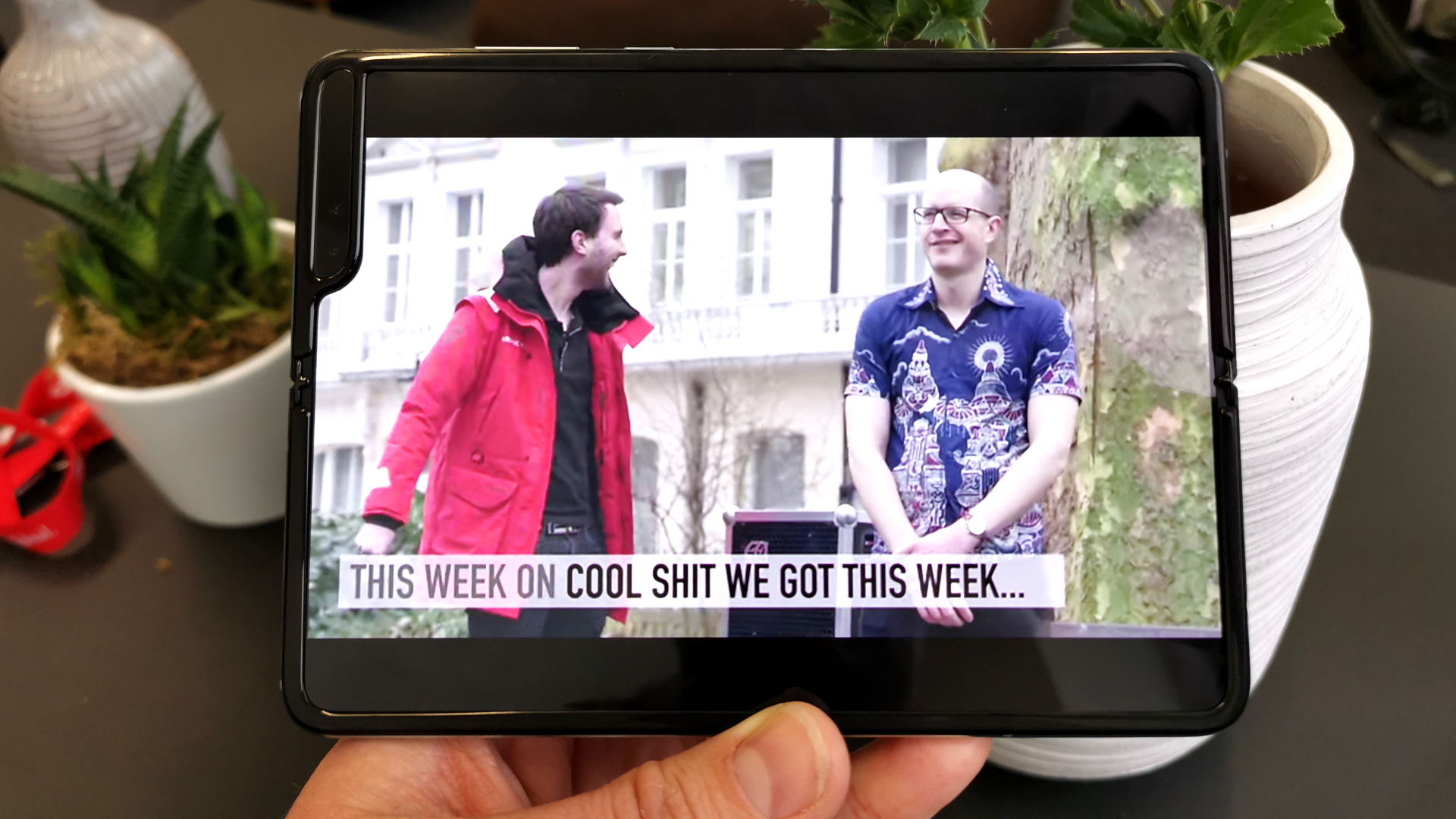

Samsung Galaxy Fold - key specs
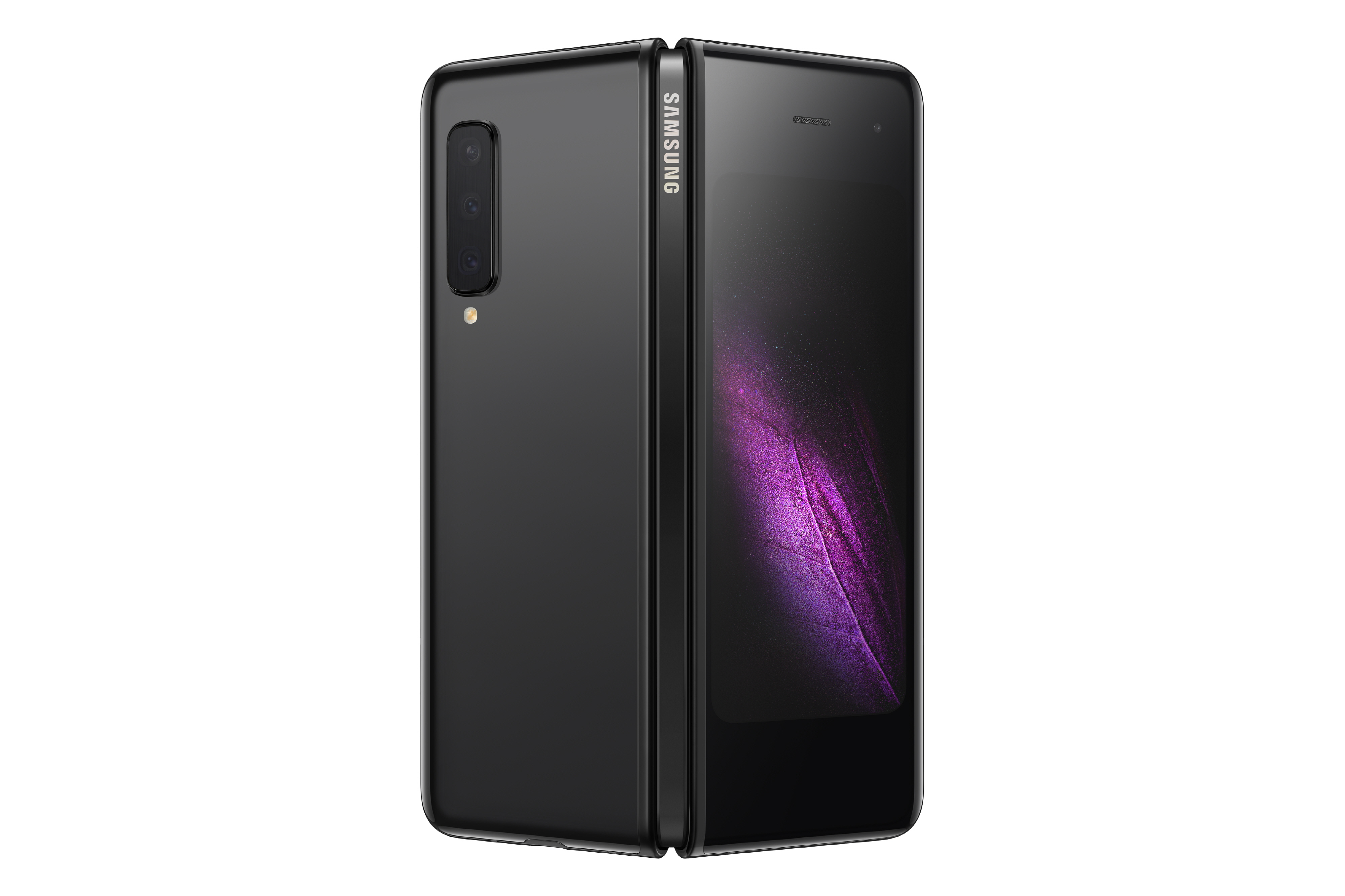
Dimensions: 160.9 x 62.9 x 15.5 mm folded / 160.9 x 117.9 x 6.9 mm unfolded
Weight: 263g
Screen: 7.3 inches AMOLED, 1536 x 2152
CPU: Snapdragon 855
GPU: Adreno 640
RAM: 12GB
Storage: 512GB
Cameras: 12MP + 12MP + 16MP (rear) / 10MP + 8MP (front)
Battery: 4235 mAh
OS: Android 9.0 Pie
We really liked the Samsung Galaxy Fold when we spent time reviewing the unreleased original handset back in April, but then a series of serious issues were discovered and, well, the rest is history.
The pioneering foldable was delayed indefinitely, as too did its main rival, the Huawei Mate X, which T3 enjoyed playing with at Mobile World Congress 2019. Both devices, despite impressing with their cutting edge technology and pioneering new form factors, failed to launch. The hype balloon had well and truly burst.
Now, five months down the line in September 2019, the Galaxy Fold is back, with its flexible arch-nemesis, the Huawei Mate X, rumoured to be making a return imminently too. Which is why, when T3 got wind that the new, improved Galaxy Fold was to be show at IFA 2019, we couldn't wait to go hands on once more.
What follows is T3's new hands-on Samsung Galaxy Fold review, which hopefully will explain just what has changed in this second iteration.

The new Samsung Galaxy Fold. Perfect for consuming content on T3.com
Samsung Galaxy Fold review: release date, price
The new and improved Samsung Galaxy Fold launches on September 6, 2019 in South Korea, with other markets (including the US and UK) following on September 18. The handset will cost £1,900 SIM-free in the UK, with US pricing from $1,980.
Eagle-eyed readers will have noticed that price is £100 more than the UK price quoted earlier this year, but that's because we're now getting the 5G variant in the UK, not the 4G one as was announced earlier.
Given its September 6 release date, the Fold now officially the first major foldable smartphone to hit the mainstream consumer market, beating the Mate X.
Get all the latest news, reviews, deals and buying guides on gorgeous tech, home and active products from the T3 experts
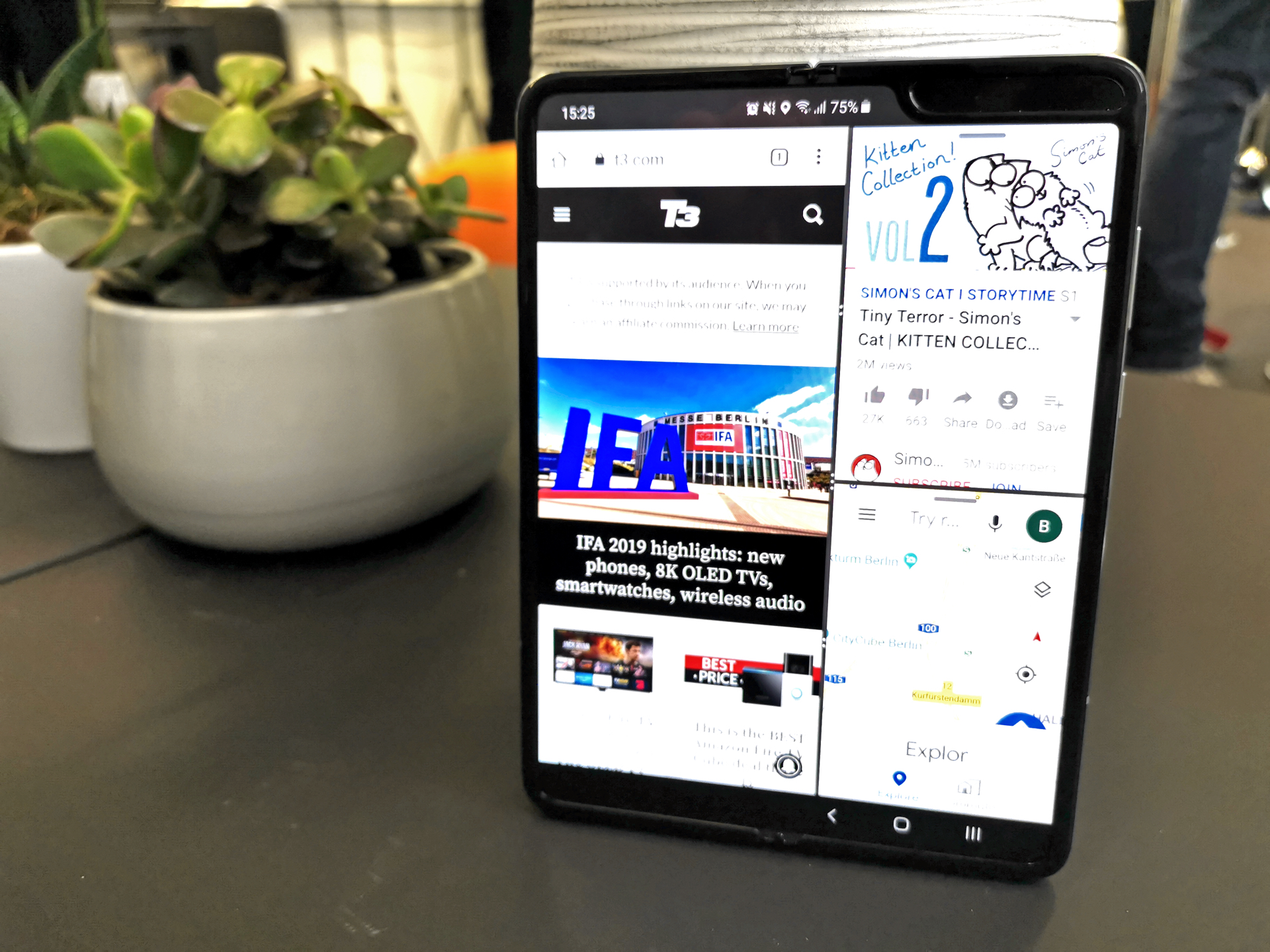
The ability to have multiple app windows on the go at one time is genuinely useful.
Samsung Galaxy Fold review: what's changed
So, what's changed? Well, the truth is very little.
The Samsung Galaxy Fold still comes with the same gorgeous and pliable 7.3-inch AMOLED display, which folds directly down the middle, and it still delivers the same genuinely refreshing ability to transform in an instant from tall and long phone, to easy-to-hold-in-one-hand tablet. When unfolded it really is like holding an iPad Mini, just one that you can then comfortably fit in your pocket.
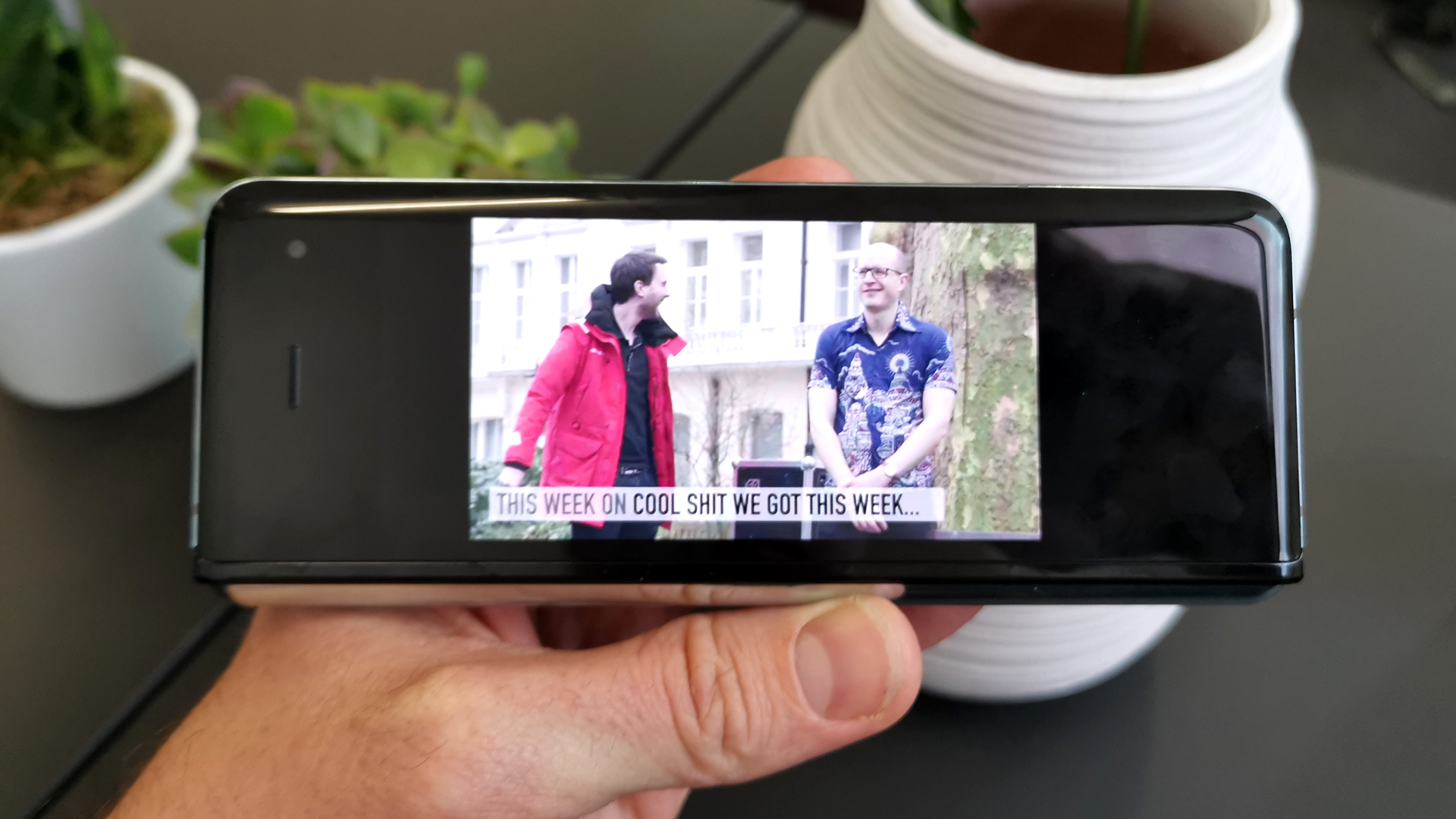
Close the device into phone mode while you have a single app open in tablet mode and it automatically transitions to the handset's front screen.
What has changed, though, is how the phone is protected. The screen, for example, on the first Fold featured a protective plastic cover that ran to the edges of the display, but stopped short of the chassis case surrounding cover. The problem with this was that certain users found they could get their fingers under the plastic cover and peel it off. This has now been changed. On the new Fold the screens cover extends under the edges of the casing, meaning that it cannot be lifted of the panel.
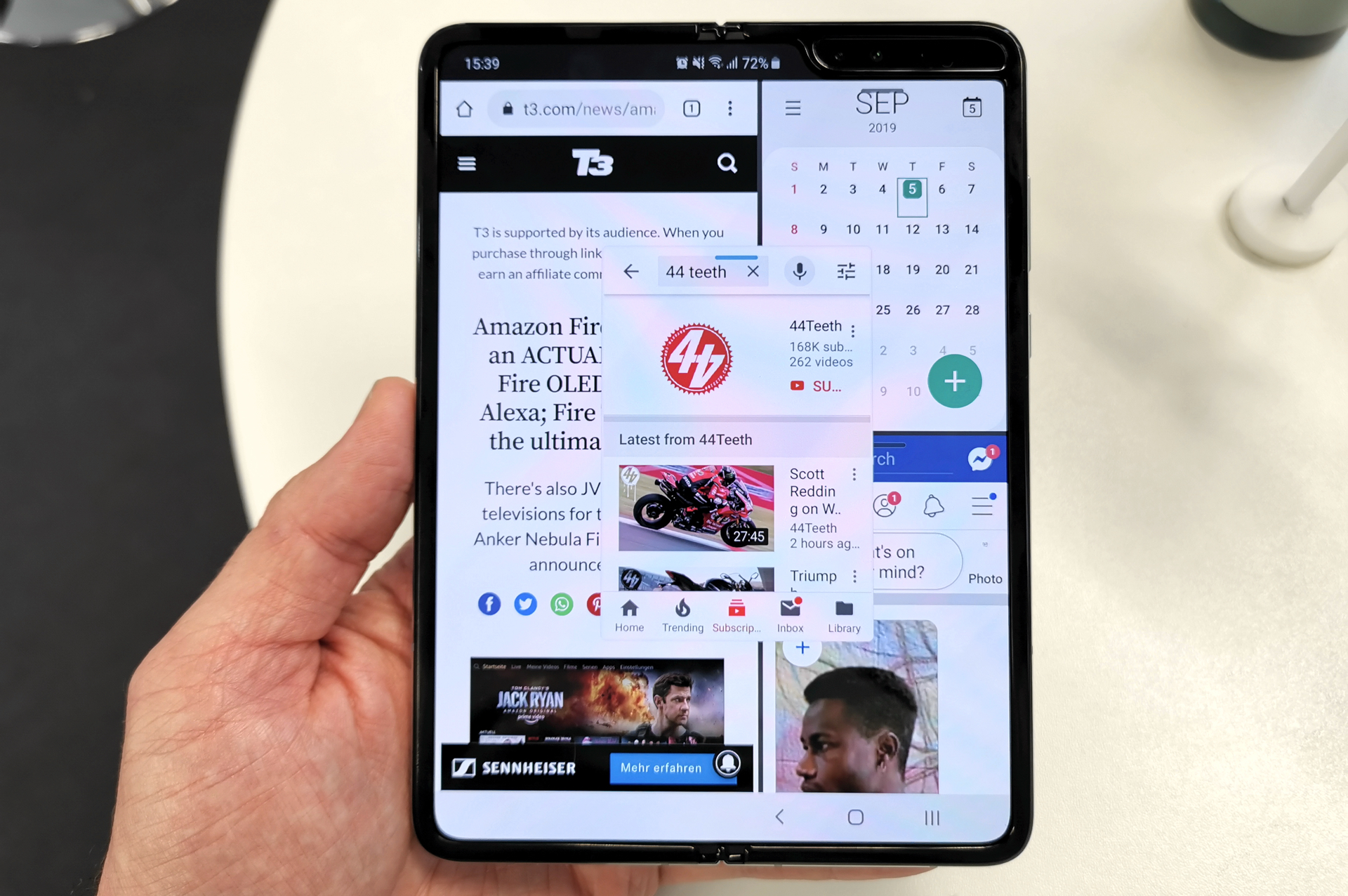
As well as having the ability to open multiple apps at once in tablet mode, you can also detach the windows so that they float. These can be positioned anywhere on the screen.
And, while we're talking about the casing, at the top of the crease in the middle of the new Galaxy Fold's Infinity Flex screen there are now a couple of small protector clips that not only secure the folding mechanism further, but also go help block up areas to the intrusion of dust and small detritus.
As with any phone that is subjected to usage over an extended period, coming in and out of pockets and bags frequently, these sorts of contaminants regularly get behind cases, in port openings, and down the side of bezel-screen joins.
And, on the first generation of the Galaxy Fold, both here and around the back down its spine, noticeable gaps meant that this problem was exacerbated.

The screen's protective cover, which could be peeled off on the original phone, is now embedded under the bezel casing.
Flip the new Galaxy Fold around to inspect the spine and it immediately becomes obvious that Samsung has worked hard to make the spaces between the back of the screens as flush as possible. As can be seen in one of the pictures below, the gaps are now reduced to the extent that only the most micro-level detritus could theoretically squeeze through. The flusher finish is also more aesthetically pleasing.

The hinge mechanism has been reinforced and blocked off from debris on both the front and back of the new Galaxy Fold.
Samsung has also reduced another gap that was noticeable on the first iteration of Galaxy Fold - the space running down the centre of the device when closed in phone mode. The result is that now only a tiny sliver of free space sits between each side of the screen, which now tapers in slightly at the phone's far edge, creating a subtle wedge shape when viewed from top-down or bottom-up.

The gaps running down either side of the Fold's spine have been reduced so they now sit flush.
The whole aim with these minor design tweaks is to further enhance the phone's robustness, and especially to protect its screen and complex hinge mechanism from potentially degrading foreign matter. And, after playing with the new device, it is obvious that Samsung has succeeded in accomplishing this without altering the overall aesthetic of the phone.
Indeed, if you put someone new to the Fold in front of the original device and the new one, we're guessing they would struggle initially to even spot the changes. And, even if they did, it would be quite a leap to be able to then explain exactly why they had been made at all.
That's because the truth is that the first Fold's issues were very minor. There were issues, yes, and they would of likely eventually caused issues for their owners (which when you're paying such a premium would of been far from ideal), but they certainly weren't experience killing.
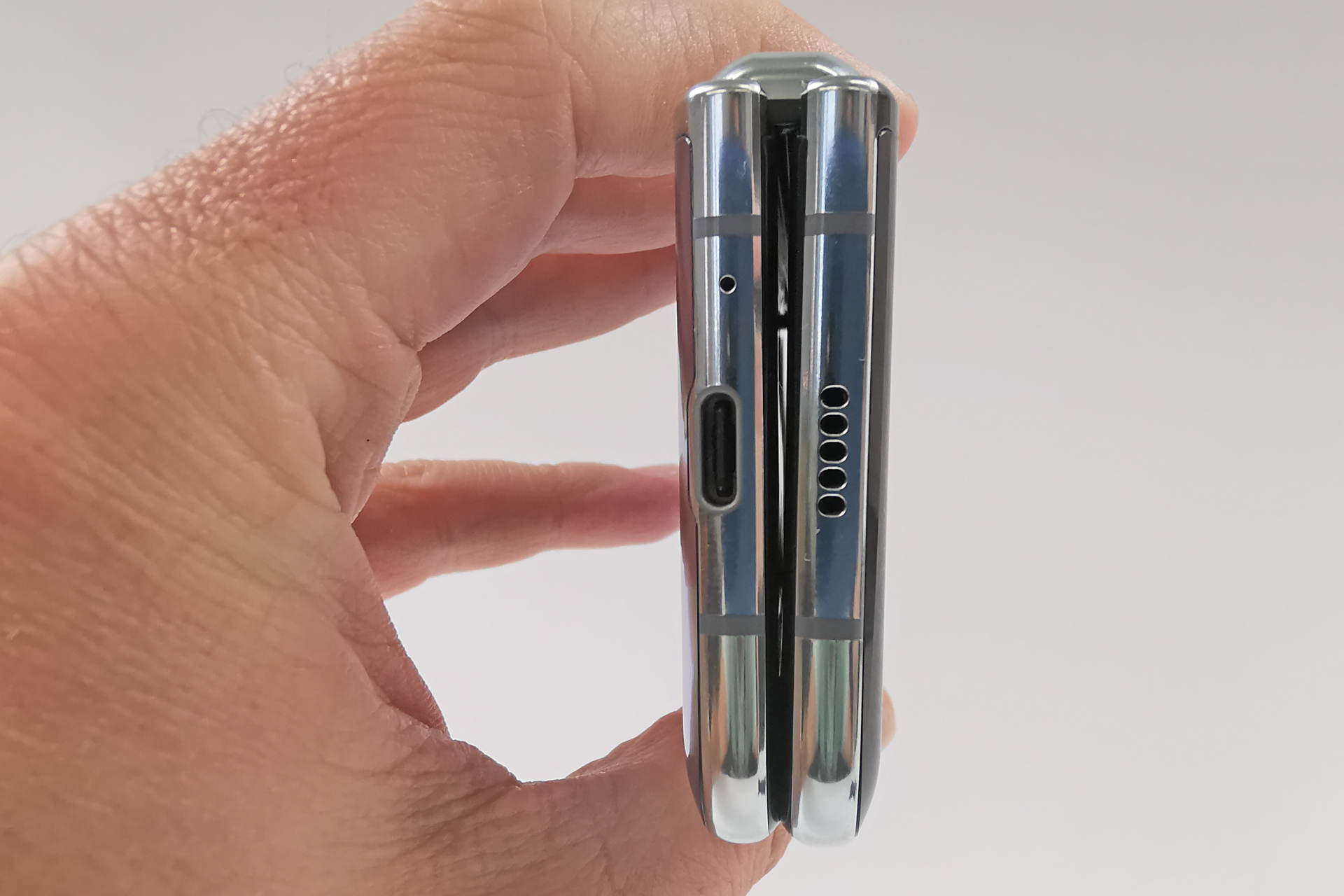
The gap between each side of the screen, when closed into phone mode, has also been reduced on the new Fold.
Samsung has also made a few changes to the new Galaxy Fold's UI, too.
A good example is the moving of the home, back and recents tab. On the original Fold this was locked bang bottom-centre of the device. Now, though, it can be located by the user on the bottom-right, bottom-left or bottom-centre, which makes accessing it depending on the user's handedness or preference easier. This is changed in the phone's settings.
Working along the same lines, the device's virtual keyboard can now also be split down the centre, so that two parts sit on either side of the screen respectively. Again, it will largely be down to user preference, but from our time with the new Galaxy Fold we found it comfier to split the keyboard, which reduces finger stretching to hit keys that would of otherwise being down the centre of the screen. The keyboard can also be floated, too.
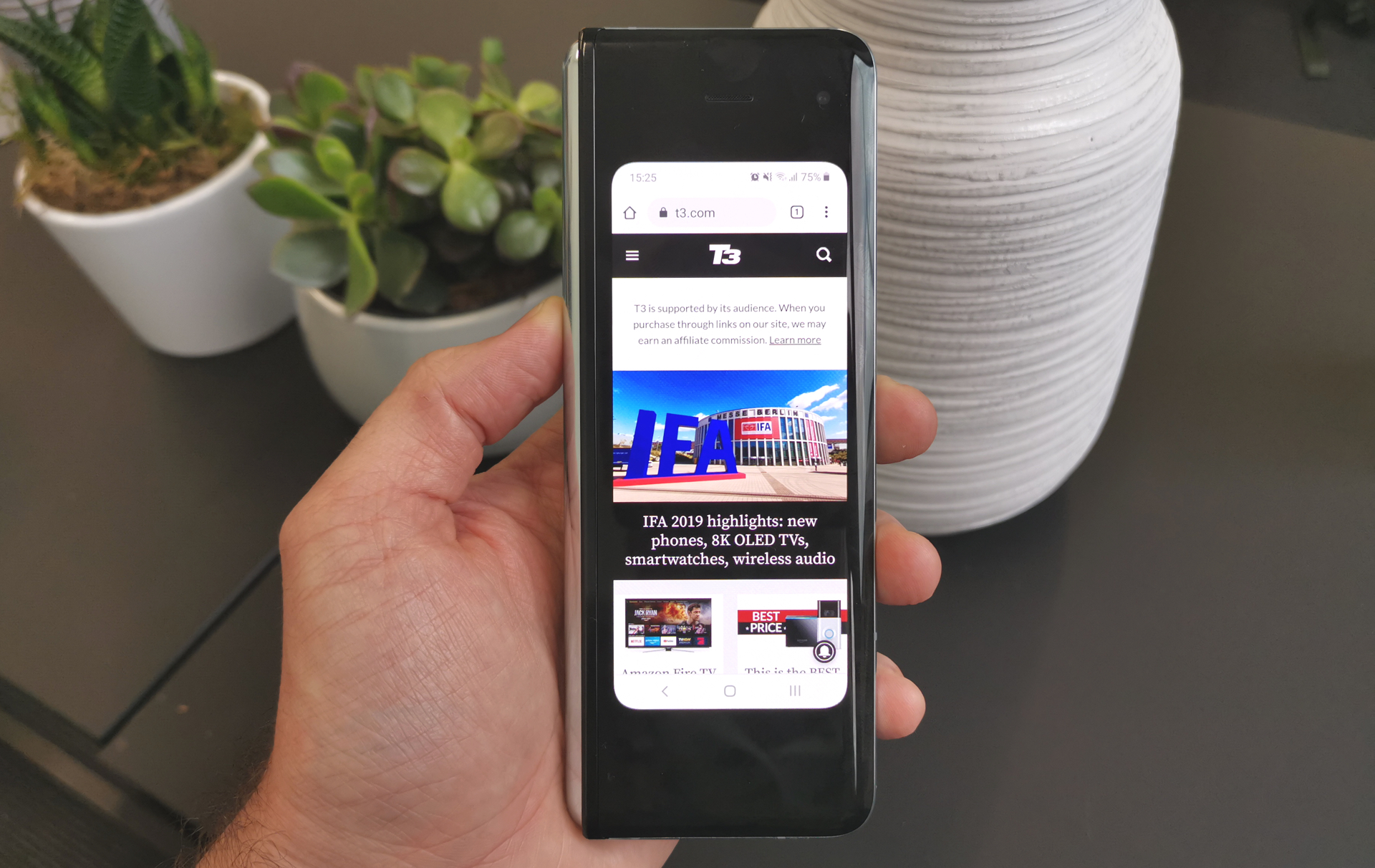
The Samsung Galaxy Fold remains a genuinely exciting new entry to the smartphone market.
Aside from the design changes and UI improvements, the other major takeaway from going hands on with the new Samsung Galaxy Fold is that, at least in the UK, it is going to be a 5G device only. 4G and 5G versions of the phone are being made, and it is still unclear whether or not the US will get the 5G or 4G version, however in the UK the phone that will hit store shelves will be the 5G variant, and that means rapid network speeds.
And, with the core spec of the new Fold remaining unaltered from the original, which is top, top-level premium (Snapdragon 855, Adreno 640, 12GB RAM, 512GB storage), we think it is still totally fair to say that the device is more than future proof.
It delivers a monster hardware spec and the very latest, fastest, network connectivity, as well as the ability to act as both a phone and tablet. From a price to value proposition, suddenly the Fold's premium entry point feels much more palatable.
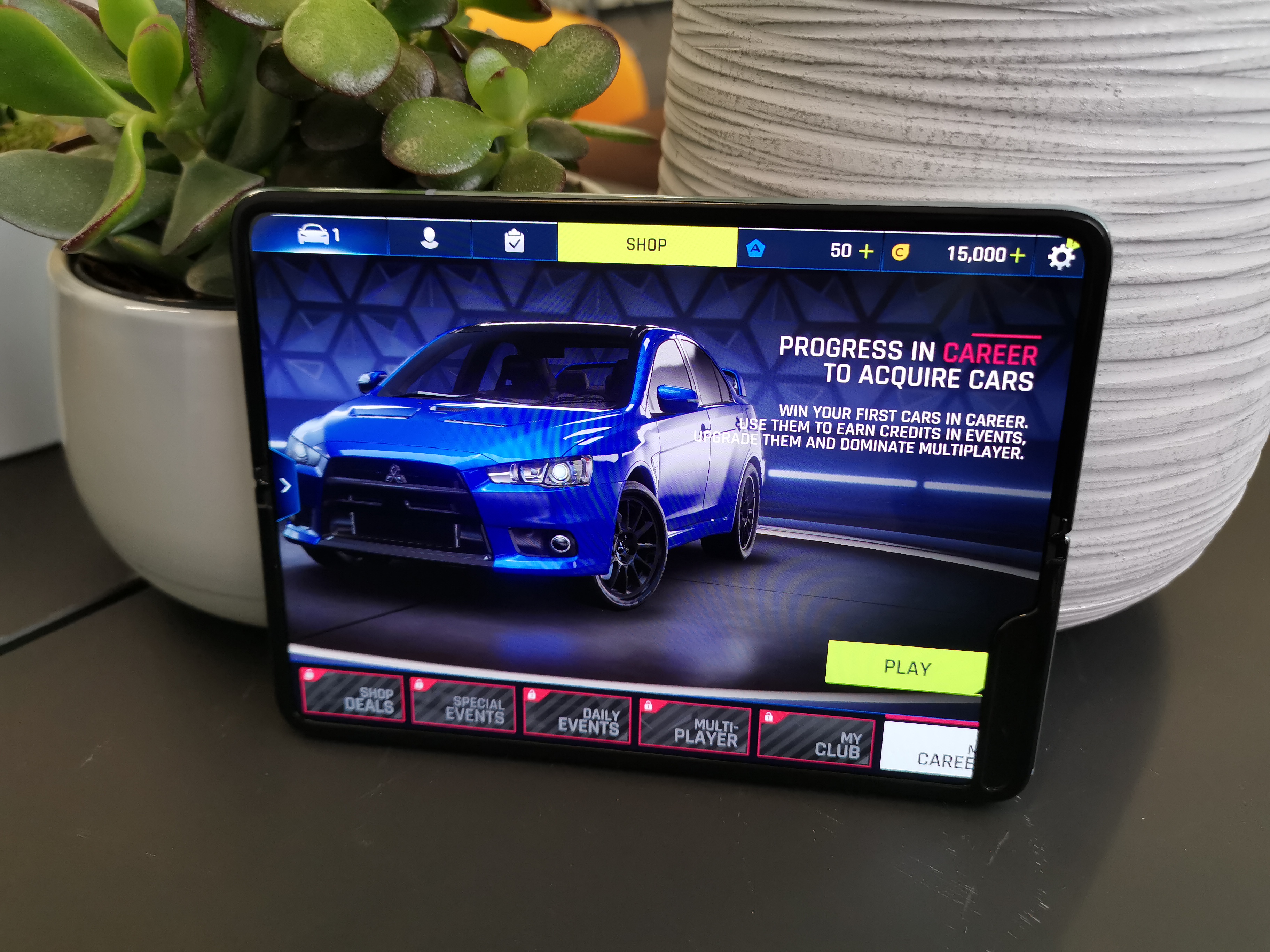
Gaming and streaming video content is a fantastic experience when using the Galaxy Fold in tablet mode.
Samsung Galaxy Fold review: early verdict
Back in April we concluded that "after using the Galaxy Fold for an hour or so, we're starting to get it. Being able to carry around a gorgeous, colourful, iPad Mini-size screen in your pocket feels transformative". That statement is as true today as it was back then. Until you use a foldable phone, like Galaxy Fold or Mate X, it doesn't quite click just how useful having a two-in-one device in your pocket can really be.
Back in April, we also concluded that the "Galaxy Fold isn't perfect", and we think it fair to say that we were bang on the money there, too. This new version of the Fold is also not perfect, but it makes a series of small but important improvements to the South Korean maker's flagship first foldable and, simply put, it is a better phone for it. It feels stronger and more durable, and has directly addressed past issues.
Samsung Galaxy Fold is one of the best equipped, most powerful 5G phones on the market. Actually, make that one of the best 5G tablets on the market, too
Far from being dead on arrival as the gloom-mongers proclaimed back in April, the Samsung Galaxy Fold is very much alive and has rekindled our enthusiasm for what this all-new form-factor can do going forward.
If Huawei can issue a strong riposte with its upgraded Huawei Mate X, then the era of mainstream foldable smartphone will have well and truly begun.
Putting the pliable OLED display to the side for now, this is also a powerhouse of a handset. It's a smartphone bursting with a rapid 7-nanometre processor, 12GB of RAM, 512GB of storage, a 4,380mAh battery, and support for 5G.
Yes, it is worth remembering that the Samsung Galaxy Fold is one of the best equipped, most powerful 5G phones on the market. Actually, make that one of the best 5G tablets on the market, too.
Whether or not these improvements are enough to convince customers that foldable phones have arrived – or are still very much a work in progress – remains to be seen. And there's no denying that the Fold remains a very niche market proposition.
However, the fact that it has, finally, after all the hype and hope, arrived is something that every tech enthusiast should be at the least just a little bit excited about.
Because if the first foldable smartphone from a major manufacturer is already this beautiful and exciting to use, there's a very bright future for this technology ahead.
More information about the Samsung Galaxy Fold can be found on the maker's official website.

Rob has been writing about computing, gaming, mobile, home entertainment technology, toys (specifically Lego and board games), smart home and more for over 15 years. As the editor of PC Gamer, and former Deputy Editor for T3.com, you can find Rob's work in magazines, bookazines and online, as well as on podcasts and videos, too. Outside of his work Rob is passionate about motorbikes, skiing/snowboarding and team sports, with football and cricket his two favourites.